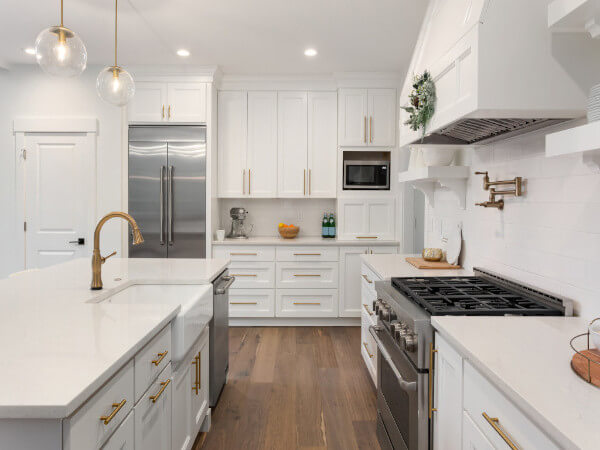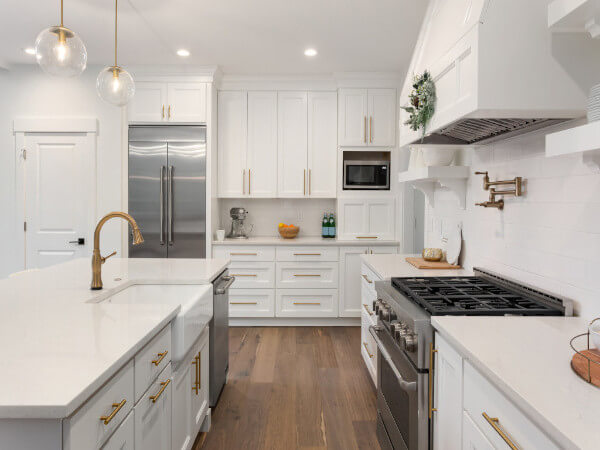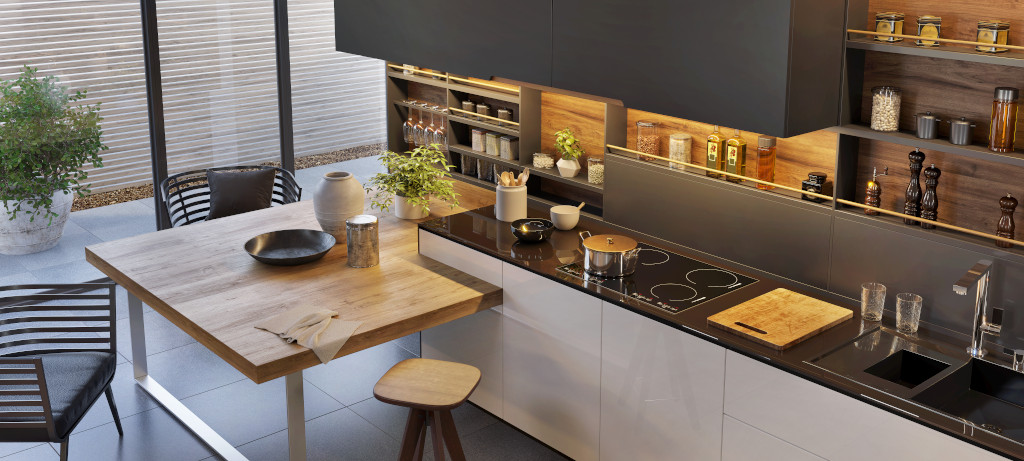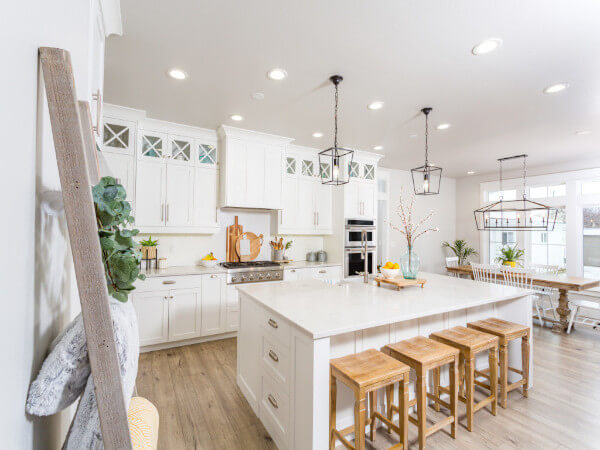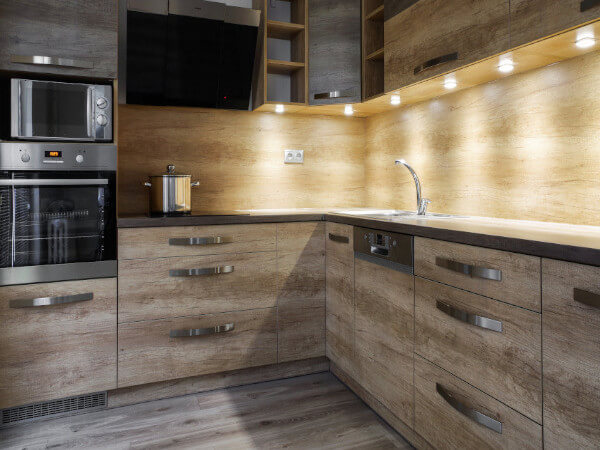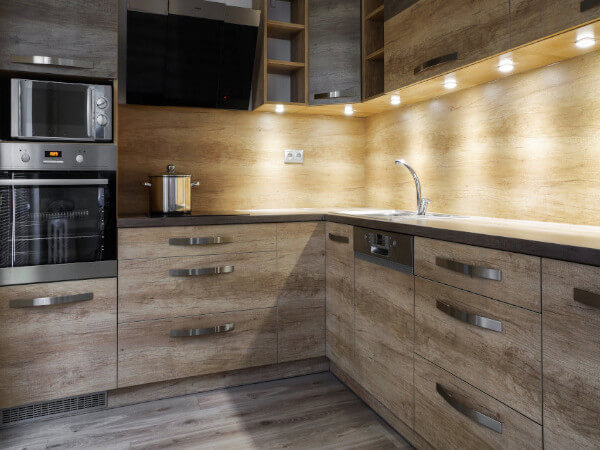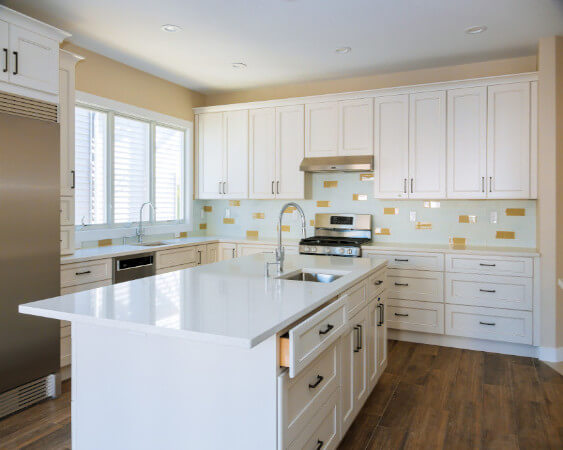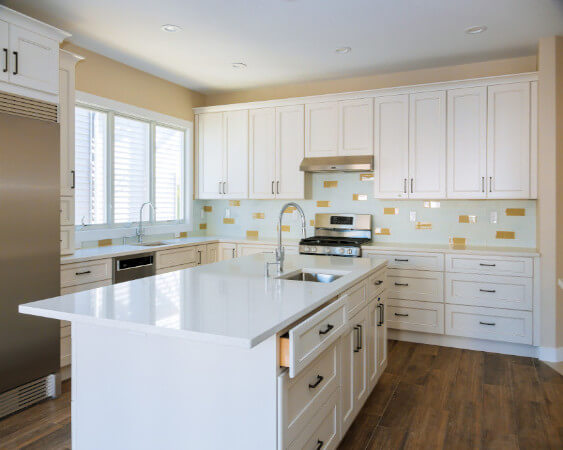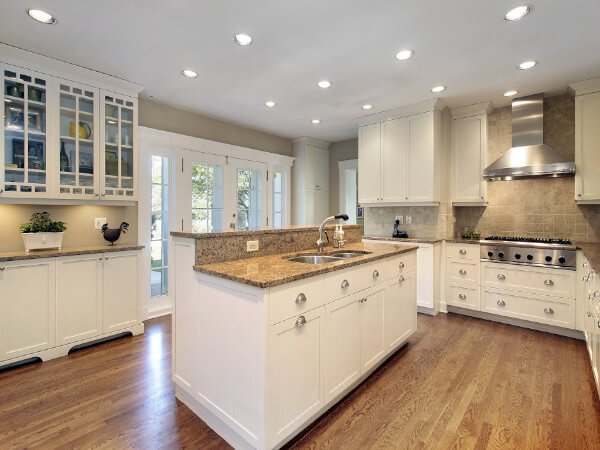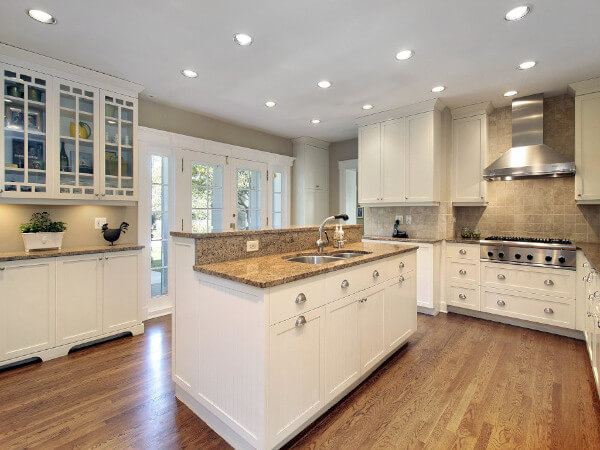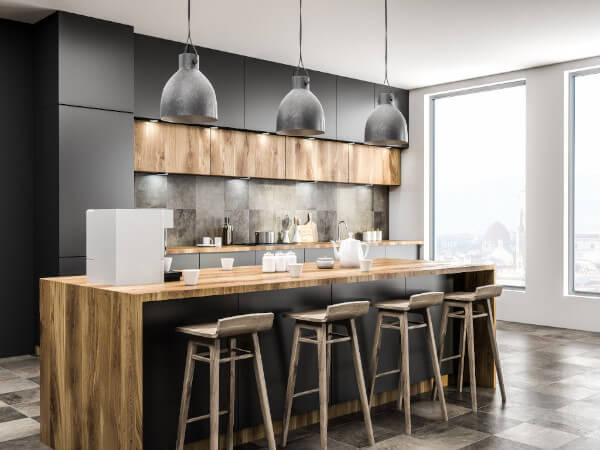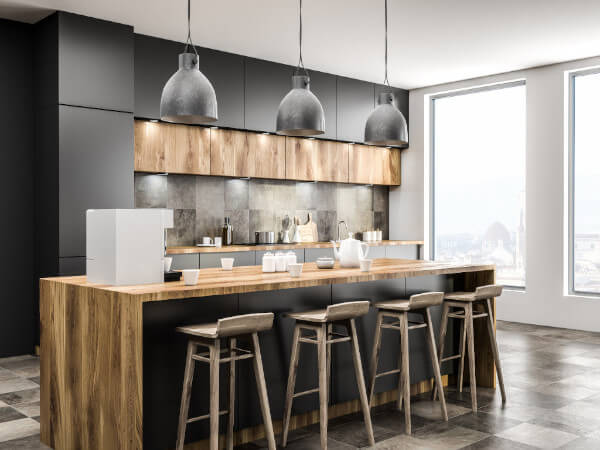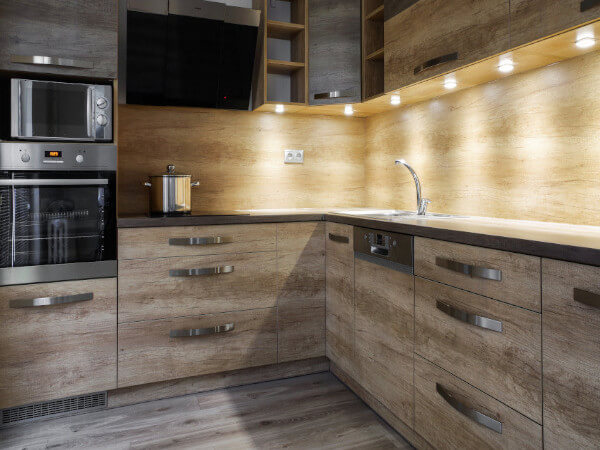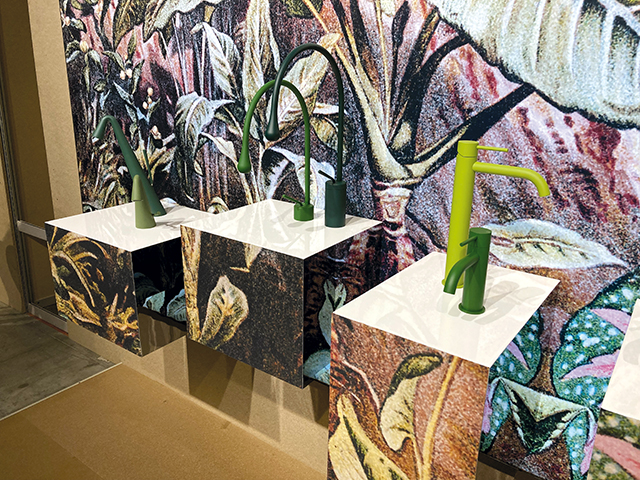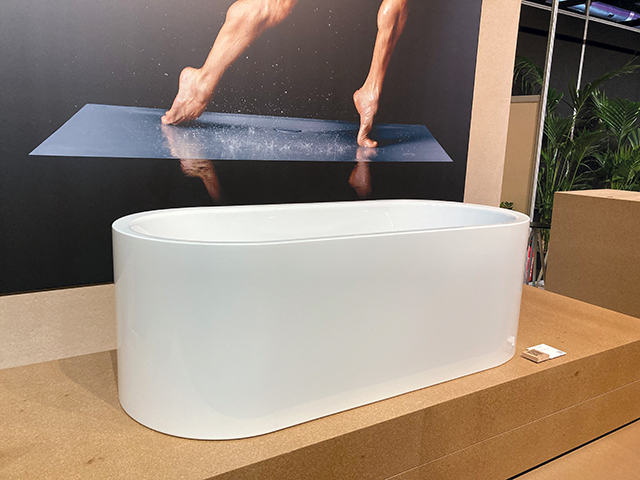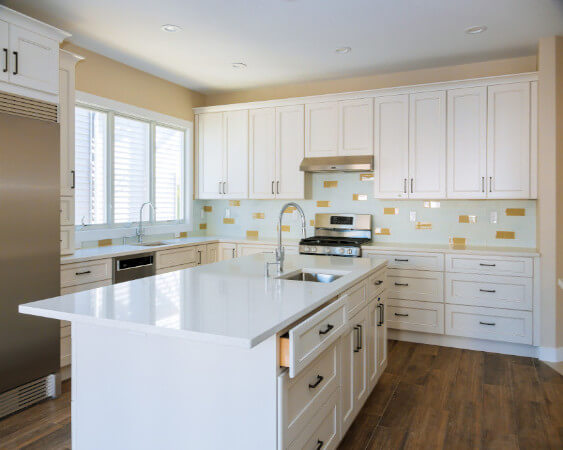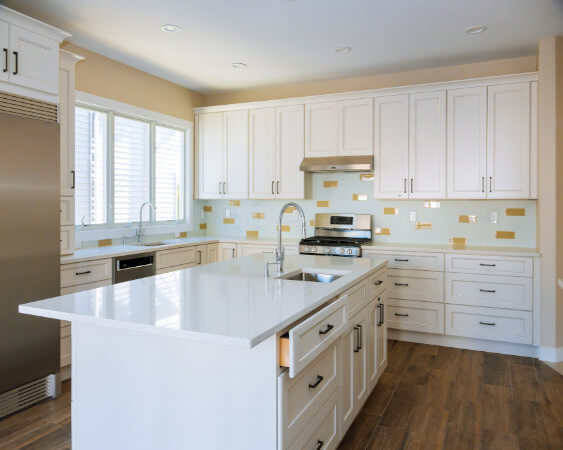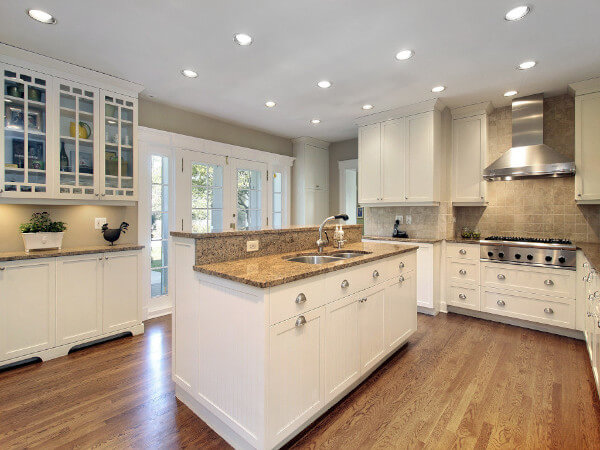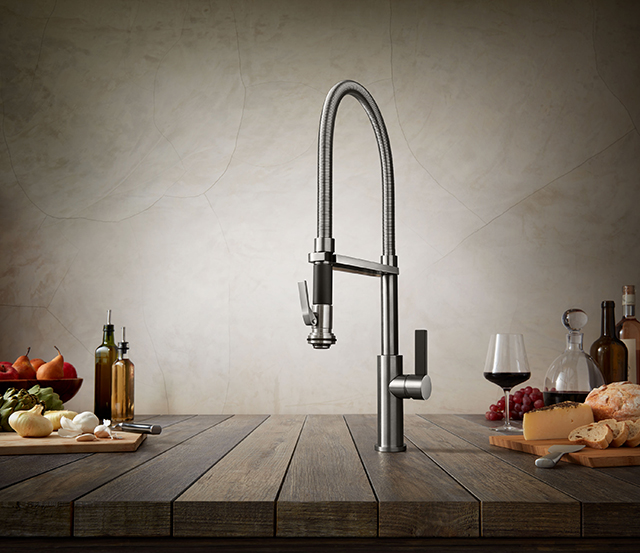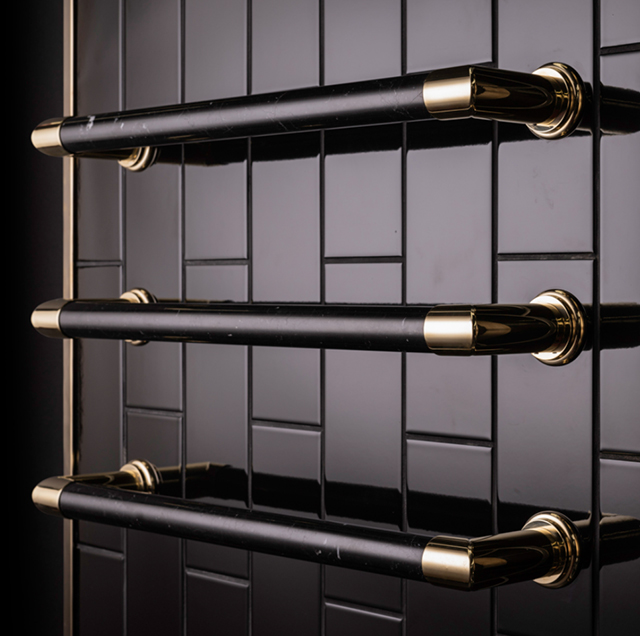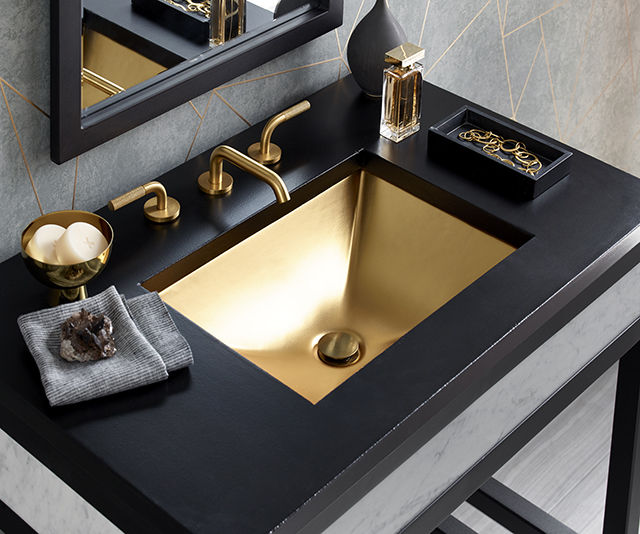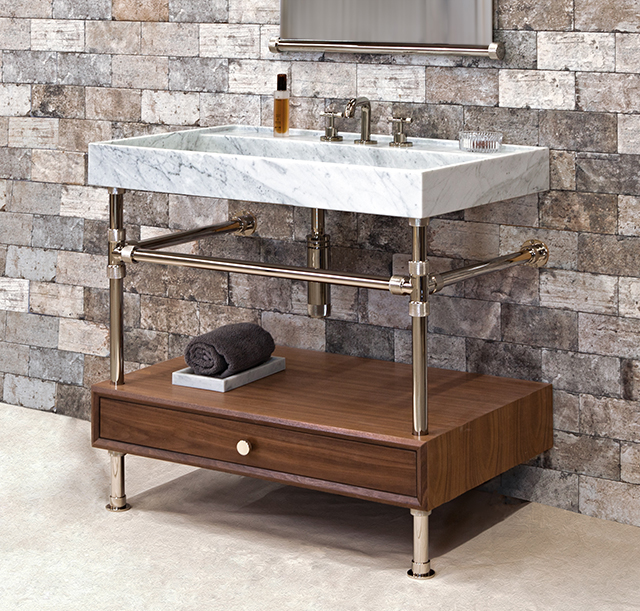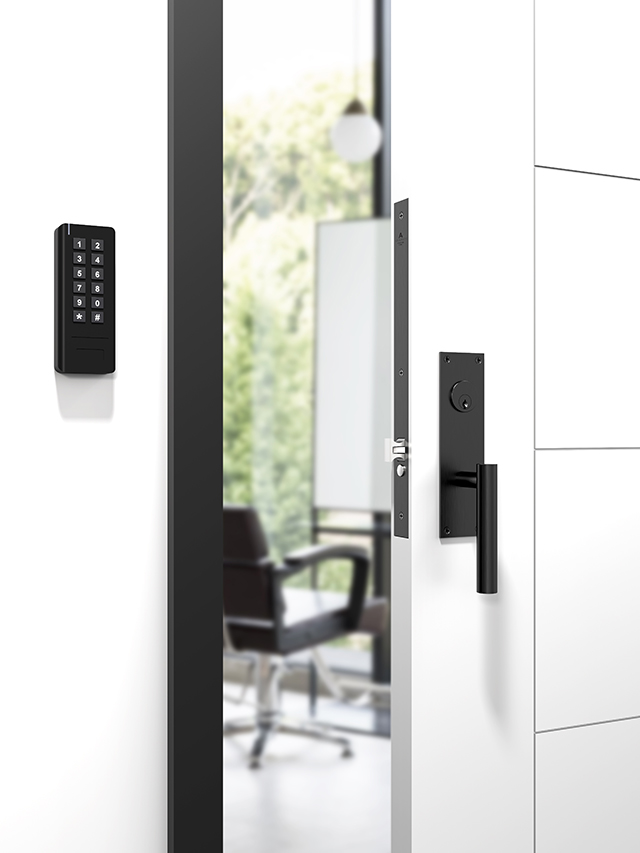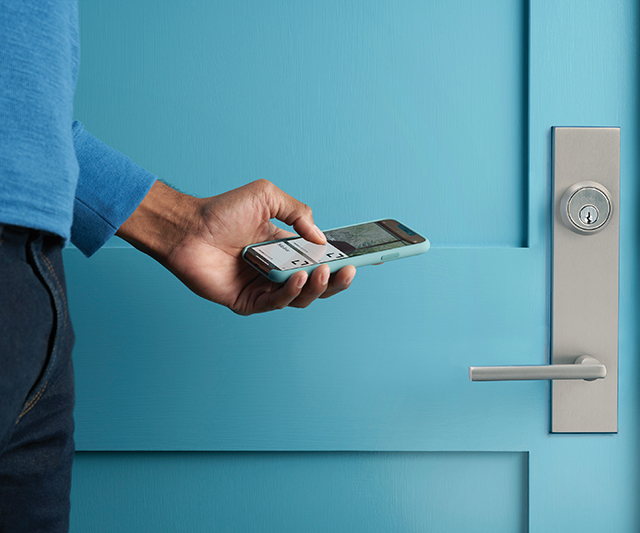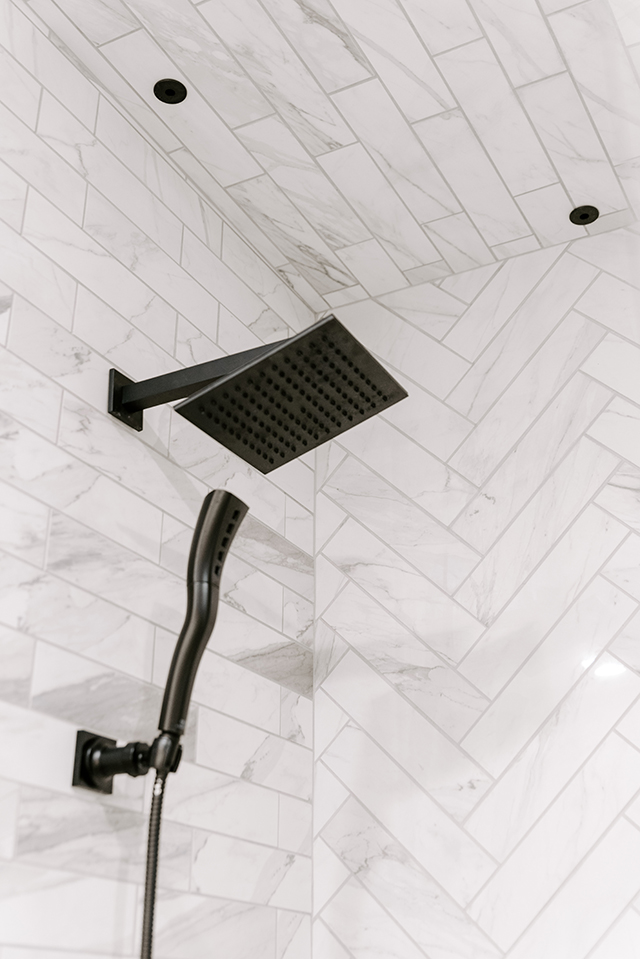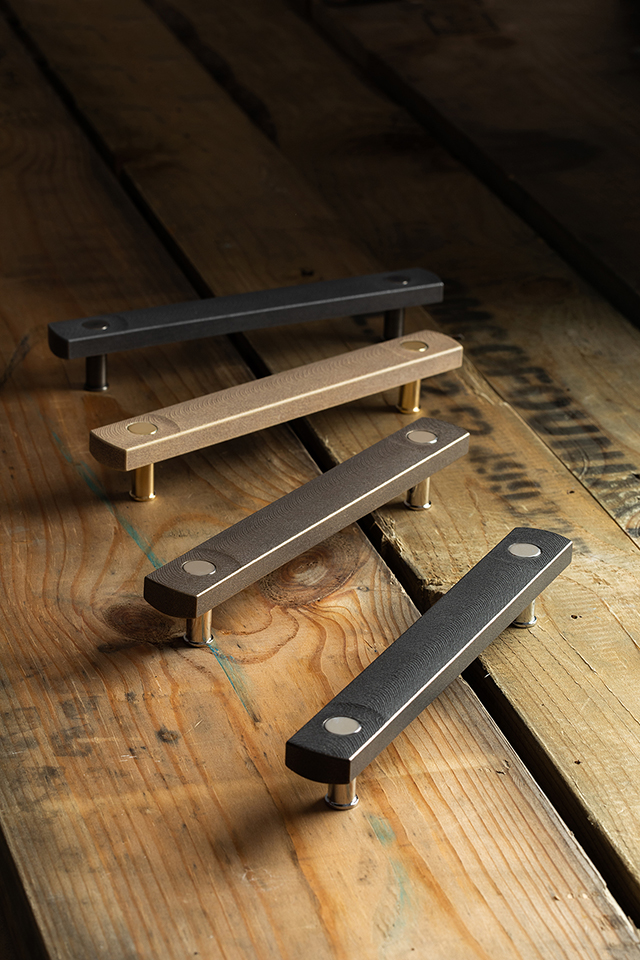Creating highly functional and aesthetically pleasing spaces is contingent on much more than design alone. Designers know that finding just the right products for their clients is equally as critical and helps set the stage for ultimate success.
Often, they discover some of those products – like the perfect cabinetry, countertop, appliance or fixture that makes a kitchen or bathroom go from ho-hum to spectacular – within the pages of Kitchen & Bath Design News or on KitchenBathDesign.com.
At the end of each year, KBDN compiles a list of the Top 20 products that designers found most interesting, as identified through reader feedback.
This year’s list shines a spotlight on cabinetry and the significant role it plays in a kitchen or bathroom space. As evidence, the top four spots are either cabinets or related accessories. An additional seven spots within the Top 20 are represented by countertops, hardware and cabinetry configuration and organization.
While cabinetry dominates this year’s list, there are plenty of other products designers inquired about throughout the year. To find out what other products made the 2021 Most-Asked-About Product list, peruse the following pages and visit KitchenBathDesign.com.

1. Slim Shaker
Over the years, kitchen and bath design has seen a change from traditionally decorative door styles to a simple shaker look that has now become the standard in home fashion, relates Lisa Myers, head of the Showplace Cabinetry Product Development team.
The Showplace Cabinetry Shaker door styles have been popular for many years, and the showcased slimmer version gives a modern spin to the shaker family with its timeless look and feel.
“The Showplace Duet Slim Shaker option is very appealing, with its simple clean lines and ability to adapt to any design style within a home,” says Myers. “When paired with one of the many paint options we have available, the Duet Slim Shaker door looks stunning, displaying a distinct character within the simplicity of the door’s slim design.”
The simple Duet Slim Shaker style is available in the overlay, inset and frameless Showplace Cabinetry lines, delivering a modern feel to any living space.
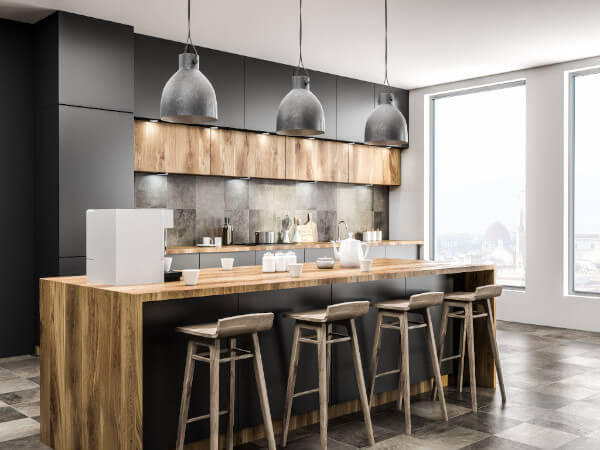
2. Clutter-free Surfaces
The ever-growing number of personal tech and small appliances, countertop cords and device clutter are at an all-time high, indicates Paul Hostelley, director of business development for Docking Drawer. As a result, incorporating features such as the Style Drawer Appliance Garage and Docking Drawer outlets inside kitchen cabinet drawers have become mainstream features that are essential to creating organized, functional and clutter-free surfaces.
Small kitchen appliances can be safely powered and accessed via the Style Drawer Appliance Garage while remaining plugged in. The outlet cutout is already prepared on the back of the pullout for easy installation of the Style Drawer Blade or Blade Duo powering outlet.
“Striking the perfect balance between aesthetics and functionality, powered appliance garage pullouts offer the ability to keep blenders, toasters, coffee makers and other small appliances connected and ready while otherwise stowed neatly out of sight,” says Hostelley.
As well, Docking Drawer in-drawer outlets are simple to install into new or existing cabinets. While commonly found throughout the home in bathrooms, nightstands and countless other residential and commercial spaces, they can be “especially practical in the kitchen, which is often the primary gathering area and where countertop space is of the utmost value,” says Sarah Robertson, founder/principal of Studio Dearborn and Docking Drawer brand ambassador.

3. Integrated Paper Towel Holder
Now, more than ever, cleanliness is of utmost importance, says Angela O’Neill, director of marketing for Wellborn Cabinet.
In response, the company offers its You Draw It paper towel holder. Integrated into the bottom of upper wall cabinetry, paper towels are kept off the countertop and protected against countertop spills. Plus, they are kept out of sight by placing them within the cabinetry.
“This design maximizes the utility of the cabinetry by maintaining the protection for your paper goods against countertop spills, and it doesn’t remove storage capacity,” she explains. “Typically, homeowners choose to position this particular feature near the sink or microwave to ensure convenience. Because the towels are enclosed inside the cabinet, they are kept away from bacteria and other contaminants for a safer and cleaner environment.”
Crafted from products made in America, both the paper towel holder and cabinet provide durability for long-term usage. This and other cabinet accessories from Wellborn Cabinet are available in a multitude of materials and finishes.

4. Purposeful Cabinets
As people spend more time inside, they are gravitating toward cabinets designed with purpose, style and overall function in mind, notes Stephanie Pierce, director of design and trends at MasterBrand Cabinets.
For example, Pierce says, “The company’s Omega Cabinetry contemporary collection not only looks beautiful, but it also accommodates the need for more storage, multi-purpose functionality and better organization for easy living. Embodying clean lines and subtle design, Omega contemporary cabinetry harmoniously elevates any space and can be modified for any lifestyle.”
With nearly 80 cabinet door styles to choose from and numerous wood type, finish, laminate and color options, the Omega collection of contemporary products truly provides a perfect fit for every taste, according to the company.
The company recently added three stunning door styles – Jax, Kali and Kadey – to the line, with streamlined profiles and a minimal aesthetic. Modern meets minimalistic in the Jax door style, where slab and shaker styling merge beautifully in a sleek slim-line shaker profile. The Kali and Kadey epitomize a classic but modern feel with shallow center panels.
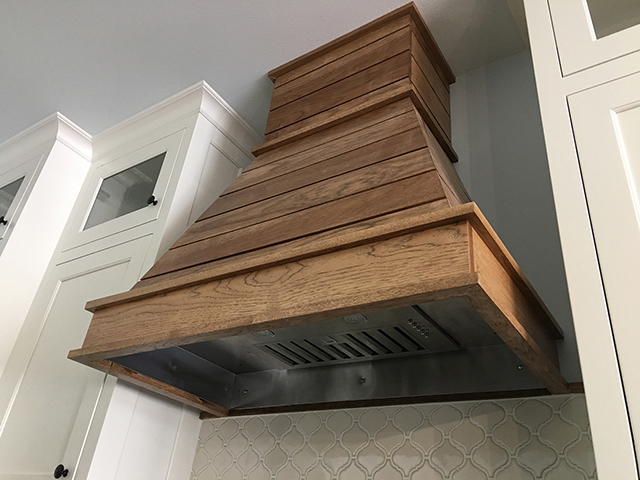
5. Shaker-style Hood
The move toward simplistic, shaker-style painted cabinets has also led to increased interest in Castlewood’s Shiplap-style Range hoods, states Pete Larson, national sales manager for Castlewood.
“Homeowners are wanting a design element that will add some unique characteristic to make their kitchen stand out,” he explains. “The Shiplap style provides designers with the opportunity to add spice to the plain, shaker-style kitchen.”
Castlewood by AMS offers Shiplap range hoods in Chimney and Box configurations, which are designed to accommodate the Ascension line of kitchen ventilation products. They can be built from select molded hardwoods or rustic weathered planks, with each offering its own distinguishing quality.
Currently, the Chimney-style Shiplap range hood is the most popular, Larson adds, noting that this style needs extra space between wall cabinets to really stand out. In remodeling applications where there is not enough space between the wall cabinets, a Box-style Shiplap range hood is more suitable, he notes.
“The box-style Shiplap range hood can fit tightly between adjacent cabinets and still offer the individual client a distinctive and appealing design option,” he says. “We see this trend continuing and we intend on broadening our offering with other components that will complement this style.”
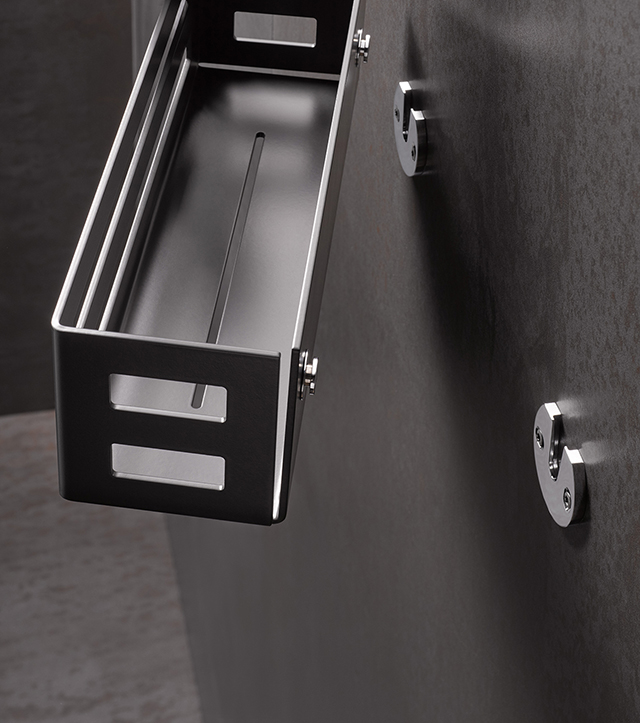
6. Shower Organizer
Staying organized is critical for all rooms of the home, including the bathroom. Keuco accommodates the need for storage in the shower/bath area by offerings its Shower Shelf. Made from sturdy, eco-friendly aluminum material with a black or white powder-coated finish, the Shower Shelf helps maintain a tidy, organized shower by holding shampoo, conditioner, body washes and other items.
Removable for easy cleaning, the shelf is available in a closed-front design to hide items or a semi-open front to see what is behind. It offers customizable widths in ½” increments. It can be hung in either glued or screwed wall brackets.
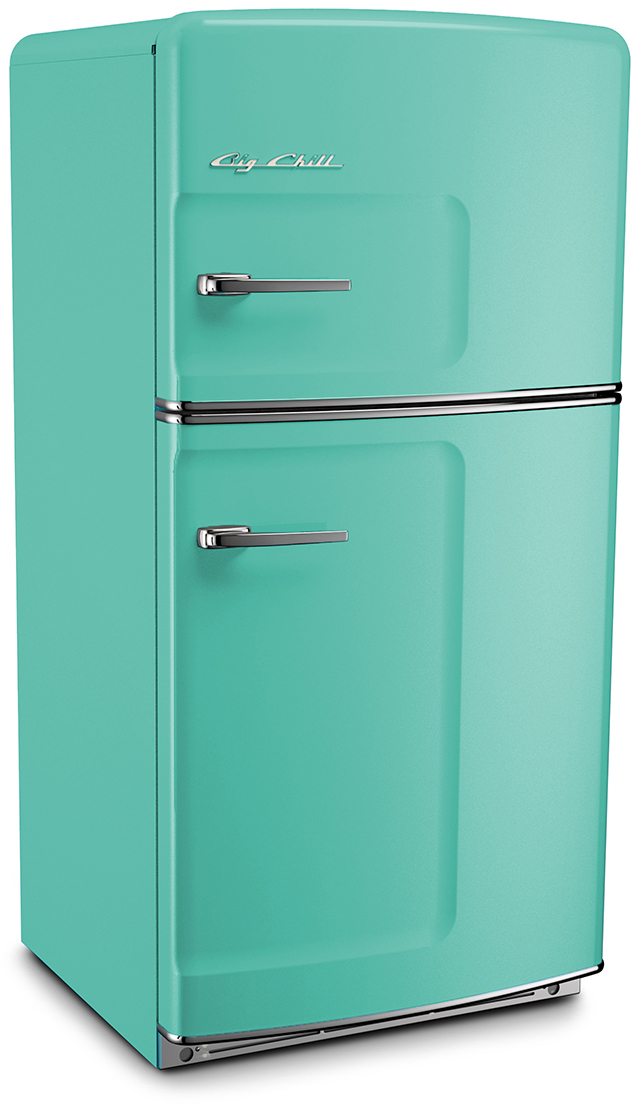
7. Retro Appliances
According to Hillary Frei, president of Big Chill, a popular trend in interior design currently is mixing styles and pulling in elements of different decades.
“It creates a unique, personalized look,” she states. “I think that’s what makes our Retro line and the Original Fridge so popular. People want a seamless blend of old and new, and that’s exactly what this product line is designed to do.”
The company added Turquoise its line of finishes for the iconic Retro Fridge. It pays tribute to the 1950s, when the hue was widely used in Mid-Century kitchens and in fashion.
“In terms of the color, the pandemic has pushed us to incorporate more vibrant colors into our personal styles, and the Turquoise color is the perfect soft blue/green to add that pop,” she continues. “It’s reminiscent of the 1950’s Robin Egg Blue we all recognize as iconic for the decade, and with retro styles coming back in all departments, it’s a great addition to the modern all-white kitchens.”
Turquoise joins the other colors in the line – White, Black, Cherry Red, Beach Blue, Orange, Jadite Green, Buttercup Yellow and Pink Lemonade. More than 200 custom colors are also available.
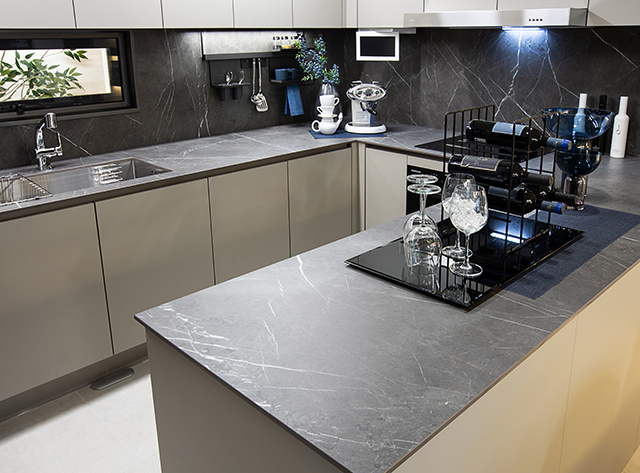
8. Look-alike Sintered Stone
The range of surface options from LOTTE Chemical Corporation includes its Locelain sintered stone collection.
Available in an extensive range of nine bold to subtle colors – including those that resemble natural stone and concrete as well as a solid selection – the ultra-compact durable surfaces come in multiple sizes, including large-format sheets in polished, satin and matte finishes.
Resistant to UV rays, extreme temperatures, scratches and stains, the line performs in interior and exterior applications, including as wall cladding, flooring and countertops in kitchen and bathroom projects or any high-traffic areas that require additional durability and functionality.

9. Interior Design Software
Interior design software is an essential part of today’s design process, relates Santiago
Morales, 2020 Design Live product manager.
“Clients are becoming more and more involved with their remodeling projects, and they expect 3D visualizations and digital floor plans to help them better understand what their future space will look like,” says Morales. “An interior design software is also beneficial to the user’s bottom line because it helps improve accuracy, minimize errors and convey realistic estimates, all contributing to a happy customer.”
2020 Design Live is a kitchen and bathroom design software with built-in manufacturer catalogs, 3D rendering capabilities, an extensive library of decorative items, infinite customization options, advanced lighting functionality and so much more.
The latest software has features such as real-time collaboration between designers and clients, artistic effect options for renderings, and a multi-point feature that showcases different perspectives in a 360° panorama. 2020 Design Live is meant to simplify and streamline the design process so that users can focus on the creative, innovative and functional aspects of a project.

10. Sliding Barn Shower Doors
Barn doors have become a popular trend in interior design and, building upon that popularity, Coastal Shower Doors offers its Eclipse Series sleek, modern and adaptable shower door.
The Eclipse marries the function and style of the barn door with smooth gliding rollers, tempered glass and a seamless header, creating a contemporary piece that makes a statement in the bathroom.
The doors are available in a black finish, customizable glass styles, textures and hardware, anodized aluminum frames and stainless steel handles, brackets and fasteners.

11. Distinctive Bath Fittings
In keeping with homeowners’ desire to mix and match modern elements with traditional design, Delta Faucet Co. offers the Kayra Bath Collection. Its transitional style adds distinctive design to any bathroom. To further elevate a space, it offers functional features like a pull-down spray wand for easy cleaning, multi-setting H2Okinetic Technology and In2ition Two-in-One Shower options.
The Kayra Bath Collection is offered in Chrome, Brilliance Stainless and Matte Black finishes.

12. Heated Freestanding Tub
Aquatica’s True Ofuro Tranquility Heated Japanese freestanding bathtub is fashioned from the firm’s AquateX solid surface material, which makes it durable, eco-friendly and easily cleanable, notes the company. Its Tranquility heating system is fitted with a recirculation system to eliminate the hassle of adding hot water while maintaining a constant 104° F temperature.
Now available in black, the soaking tub allows for full body immersion and includes an integrated seat and backrest to ensure comfort and relaxation, notes the firm.

13. Push-to-Open Cabinet System
Hettich’s Push-to-Open Silent makes cabinetry effortlessly handleless by opening drawers mechanically in response to a light press on the front panel. On shutting, they close in a gently cushioned movement.
The system recognizes drawers closed by hand and does not reopen them accidentally. And, if there’s a lack of momentum on closing, a drawer energy storage system prevents the drawer from opening again and reduces the force needed to close it next time.

14. Corner Drawers
Drawers are a great way to store and organize items. To maximize corner storage, WalzCraft offers its Inside Corner Drawer Boxes, which are designed to create easily accessible storage space in lieu of lazy susan cabinets. The addition of full-extension drawer glides allows access to stored items and eliminates kneeling to get to those hard-to-reach places.
The drawer boxes are made to order and are available with half-blind dovetail construction in solid wood and Baltic birch plywood.

15. Natural Minerals Porcelain Surfacing
Corian Design showcases its new Corian Endura line, a porcelain made from 100% natural minerals that is resistant to extreme heat, UV light, abrasions, scratches and stains, according to the firm.
Endura is non-porous and Greenguard Gold Certified. It is available in four product families, including tones in monochromatic, marble, metal and cement, that match up with a wide selection of kitchen styles. As a complement, it is also offered in two finishes – Satin and Mineral.

16. Quartzite Surfacing
Antolini Luigi has added to its wide range of natural stones with Fusion Wow Quartzite, available in three styles: Fusion Wow Dark, Fusion Wow Light and Fusion Wow Multicolor. Fusion Wow | Original ‘Light’ quartzite is unique for its colors and striking veining, with shades of green that spread like gentle waves. The surfacing can be customized with any finish the company offers.

17. Custom Color Appliances
Elmira Stove Works offers custom color capabilities to its Antique line. The company’s antique appliances are now available in more than 1,200 custom colors, significantly expanding design options.
Inspired by 1850s-style appliances, Elmira’s Antique line includes a series of ranges, refrigerators, wall ovens, microwaves and dishwashers/dishwasher panels. Each appliance is custom crafted according to desired color, trim style and cooking features (for ranges) to suit personal preference and cooking style.
Elmira’s antique appliances can be ordered in approximately 200 colors from the RAL color code book and 1,040 hues from the Axalta SpectraMaster Solids Color Atlas. In addition, the company can color match to many colors.

18. Hands-free Cabinet Pull
For a more hygienic approach to operating lower cabinet doors and drawers, Doug Mockett & Co. offers the foot pull, which operates cabinet doors and drawers by using the front of a shoe.
Delivering hands-free touchless operation, users can safely access storage areas without the fear of spreading or contracting germs. The lip on the front edge is softened with a subtle bend to prevent scratching on dress shoes – just slip the front of the shoe underneath and pull forward.
The foot pulls are available in Matte Black, Matte White, Metallic Silver and Satin Stainless Steel.

19. Shower Wall Panel System
Wilsonart has introduced Wilsonart Home, a curation of the company’s most sought-after collections with surfaces that are versatile enough to be used anywhere – on countertops, cabinets, walls and more. The Wetwall Water-Proof Wall Panel System includes 15 waterproof, lightweight panels that work well for wet area applications, such as showers. The patented waterproof solution eliminates the need for grout or demolitions, since it can be installed directly over gypsum board, green board, fiberboard and existing tile.

20. Smart Cube Storage
Häfele delivers modular display storage with its Smartcube Open Storage System. Smartcube can be as small as one shelf unit on a wall, or multiplied exponentially to fit any project, and can even be paired with casework, islands and other furniture. Projects can be customized by cutting horizontal runs to their preferred length and using shelving to match. Smartcube is offered in black and stainless steel look finishes.
The post Cabinetry for the ‘Win’ appeared first on Kitchen & Bath Design News.
